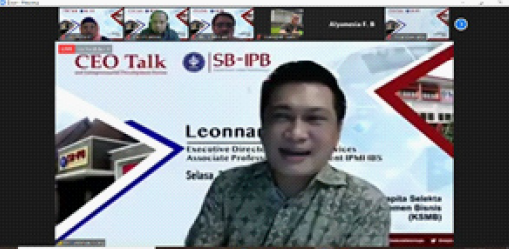
Crucial Conversation in Practical Approach
On 29 September 2020, Associate Professor Dr. Leonnard Ong, who is the Executive Director of Frontliner Services and also a lecturer at IPMI International Business School, filled the Kapita Selekta Management and Business (KSMB) class with the title “Crucial Conversation: Practical Approach”. Dr. Leonnard Ong completed his S3 from SB-IPB, while the Master of Commerce from the University of Sidney and the Master of Business Administration from The New York University. He has also participated in various executive programs and courses in Europe, Australia, China, and other countries.
The crucial conversation that is delivered is divided into two, namely intra personal and inter personal communication skills. First, intra-personal communication skills emphasize understanding yourself with four self-awareness sources. The four ways of seeing yourself are (1) others’ images through how other people see me, (2) social comparison through how we compare with colleagues, (3) your interpretations and evaluation through how we evaluate our feelings and behavior, and ( 4) cultural teaching through how cultural teaching affects us.
Second, interpersonal communication skills emphasize working with others through communication types and groups to convey goals. We need to understand the difference or diversity which can be grouped into the primary, secondary and tertiary dimensions. Primary dimensions include age, gender, sexual orientation, ethnicity, race, and mental and physical abilities. Secondary dimensions include communication style, education & communications, income, work experience, geographic location, organizational role, and level, language, family status, work style, and religion. Tertiary dimensions consist of change readiness, values, beliefs, motivation, emotional intelligence, risk aversion, intellectual ability, and learning styles. There are six barriers to receiving diversity or differences, namely prejudice, ethnocentrism, stereotypes, harassment, discrimination, and blaming the victim.






Recent Comments